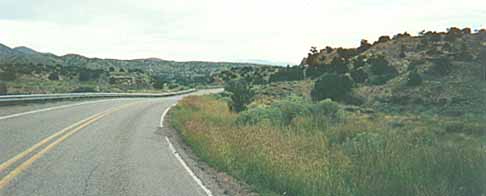
Highlights from, Take Back Your Streets (How to Protect Communities From Asphalt and Traffic), by Stephen Burrington & Veronika Thiebach, Conservation Law Foundation (CLF), revised 1998. Take Back Your Streets, "is an essential guide for any community activist, local policymaker or concerned citizen interested in knowing how to use existing laws and regulations to persuade public highway officials to design and widen streets and bridges in ways that don't harm the natural environment, destroy community character and create unsafe neighborhood speedways." These selections made by Ross Lockridge.
--...[T]raffic calming is based on the philosophy of co-existence. p. 31.
--The policy of traffic calming is to let the cars come--but on terms that protect our interest in having safe, attractive, congenial places to live. p. 31.
--The primary objective of traffic calming techniques...is to slow down traffic. Related objectives are to make traffic flow at a steady pace...and to bring greater predictability and courtesy.... p. 31.
--Other traffic calming techniques involve physical alterations that affect motorist psychology and provide a cue to slow down--for example, narrowed travel lanes. p. 32.
--Many rural roads with travel lanes 9 to 11 feet wide and one to two-foot shoulders can an should be left at their current widths, even if they serve as arterial routes. p. 32.
--Signs, pavement markings, and other visual cues can be used to alert motorists to upcoming curves. p. 32.
--It may be appropriate to provide a consistent pavement width, which may mean narrowing lanes to less than 11 feet, particularly on roads that serve as local or collector routes rather than arterials. p. 33.
--Planting vegetation or location signs close to a street or road will reduce the "optical width" of a road--make it seem narrower than it is and help slow down motorists. p. 33.
--If a paved shoulder is provided for bicyclists, it may be possible to avoid inducing higher traffic speeds by keeping the traffic lane narrow, separating it from the shoulder or bicycle lane with a conspicuous stripe.... p. 33.
--The best thing to do with winding roadways is generally to leave them as they are but provide better cues to motorists. Straightening old roads destroys their scenic character but by no means necessarily improves safety: so called "roadway geometry"--curves, dips, width, and so on--is responsible for comparatively few accidents, and straightening a road leads motorists to drive faster and can result in more serious accidents. p. 34.
--One of the best steps to take on old roads is to define travel boundaries more clearly by using reflectorized paint for...both center lines and edge or "fog" lines. p. 34.
--If a curve is unexpectedly sharp...pavement striping, reflectors, and signs can be used to alert him as he approaches. P. 34.
--...building...roads in ways that encourage speed and then trying to slow motorists down doesn't make a lot of sense. Modest physical reconfigurations of streets and roads are the only reliable and cost-effective way to control traffic. p. 38.
--Most traffic engineers will respond to new information and good ideas that are presented fairly and effectively. p. 41.
--...a deteriorating bridge that needs repair or replacement may have become the point of departure for a road widening project extending half a mile from each end of the bridge. Similarly, a 3R project may have turned into a major reconstruction project. In such cases, if the...road in its existing condition serves the community rather well, your "alternative" may be a scaled-down project--one that sticks to basics and addresses a problem without the damage to the landscape, impact on traffic speeds, and additional cost that the highway department's proposal would involve. p.42.